I’m obsessed with water.
I check the rain forecast like some people check stock prices.
I hoard half-drunk glasses of water to save for plants.
I have opinions about pavement.
I have several water fountains and bird baths to support wildlife (but that’s for another day)
The fact that we live in a drought state (California) might have a little something to do with it, but so does my awareness that I’m responsible for doing what I can to live as consciously and compassionately as I can.
That is to say, you too, can share my obsession with water regardless of where you live!
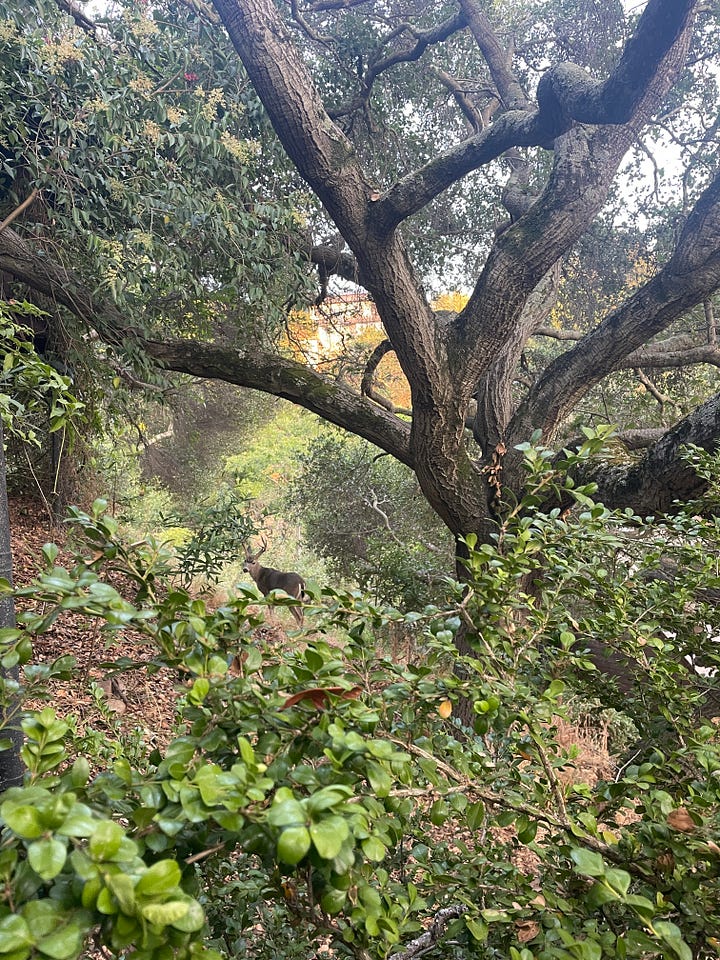
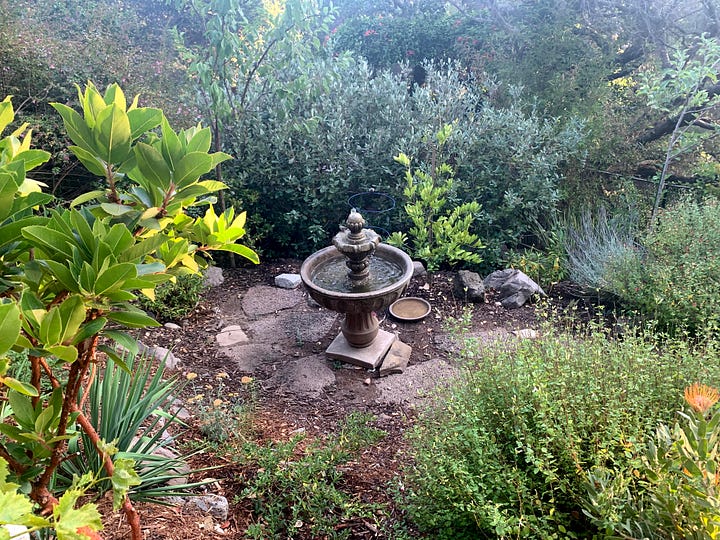
I started formally talking about zero waste principles several years ago now, and they’ve been something I’ve aspired to live by for decades even though I didn’t characterize them as “zero waste.” I could use the word “sustainable,” but it feels too academic, too removed from something people can see themselves embracing.
And just to be clear, zero waste doesn’t mean zero, and it certainly doesn’t mean perfection. The “zero” is aspirational, not absolute. Having a zero-waste mindset means we frame ourselves as owners taking responsibility rather than as consumers merely taking. It means valuing what we bring into (or already have in) our lives, and valuing something means using it for the purpose for which it was made.
From Fiction to Reality
When it comes to water—the fact that it’s a limited natural resource, scarce in many parts of the world, and something we should use wisely while we have it—it’s been on my mind for a long time. Even before I moved to California. It may have started around the time I read Dune by Frank Herbert.
The novel explores many themes, but water scarcity is woven deeply into its story and setting. I first read the book as a teenager, but I became obsessed with David Lynch’s 1984 film adaptation, and in college, I even wrote a paper on it through the lens of the Hero’s Journey. That’s not to say Dune was what turned me into an environmentalist or water conservationist, but it definitely shaped my thinking and sparked an interest in the politics of water.
And if Dune doesn’t make you think about water as a political issue, Chinatown (Roman Polanski, 1974) certainly will. While the film’s dark plot revolves around corruption, incest, and power, the backdrop—the history of Los Angeles’ water wars—is just as disturbing. The film is loosely based on real events, and the true story behind William Mulholland and the Los Angeles aqueduct is even more fascinating than what’s depicted on screen. If you want to dive deeper, I highly recommend reading Cadillac Desert: The American West and Its Disappearing Water by Marc Reisner. And if you’ve never seen Ken Burns’ The West, it’s a harrowing but essential watch.
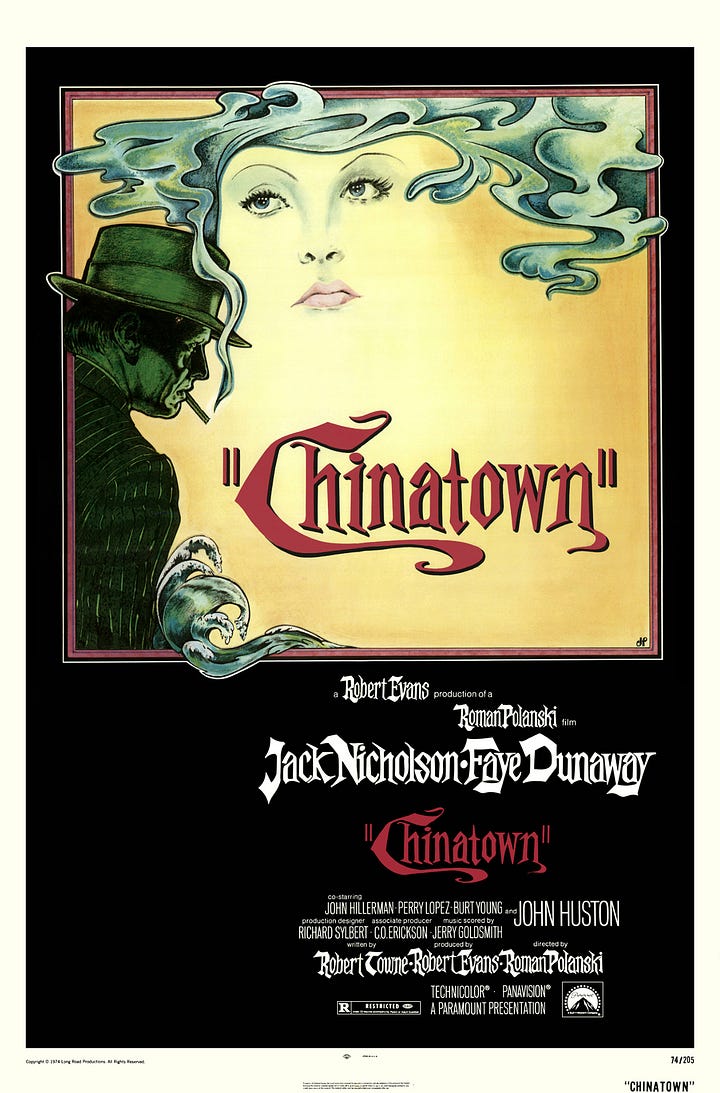
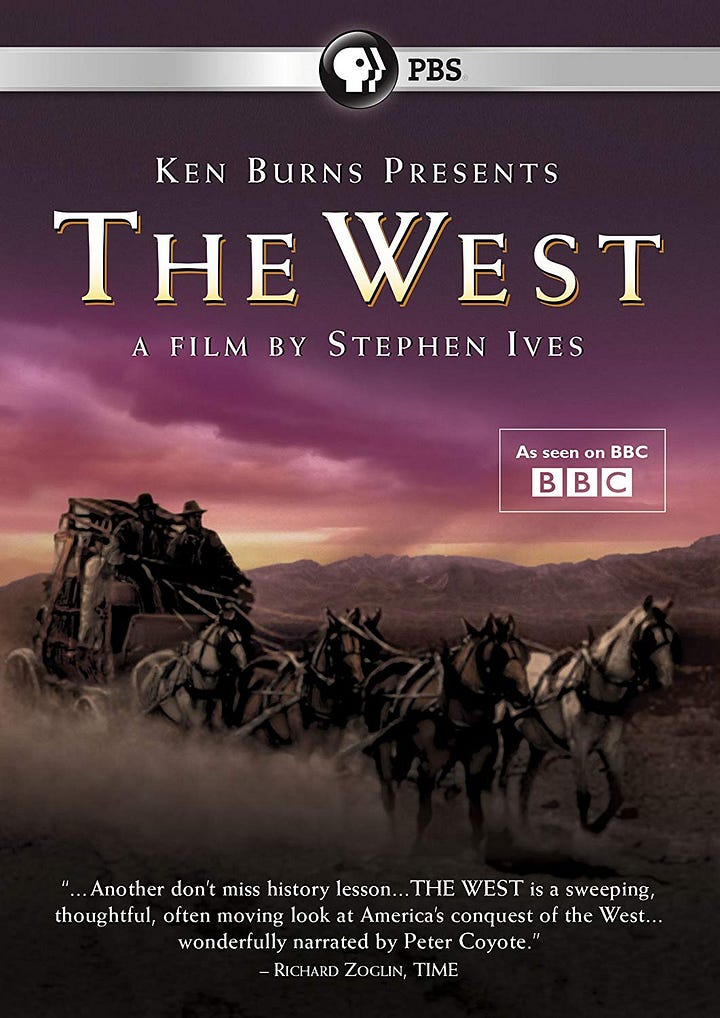

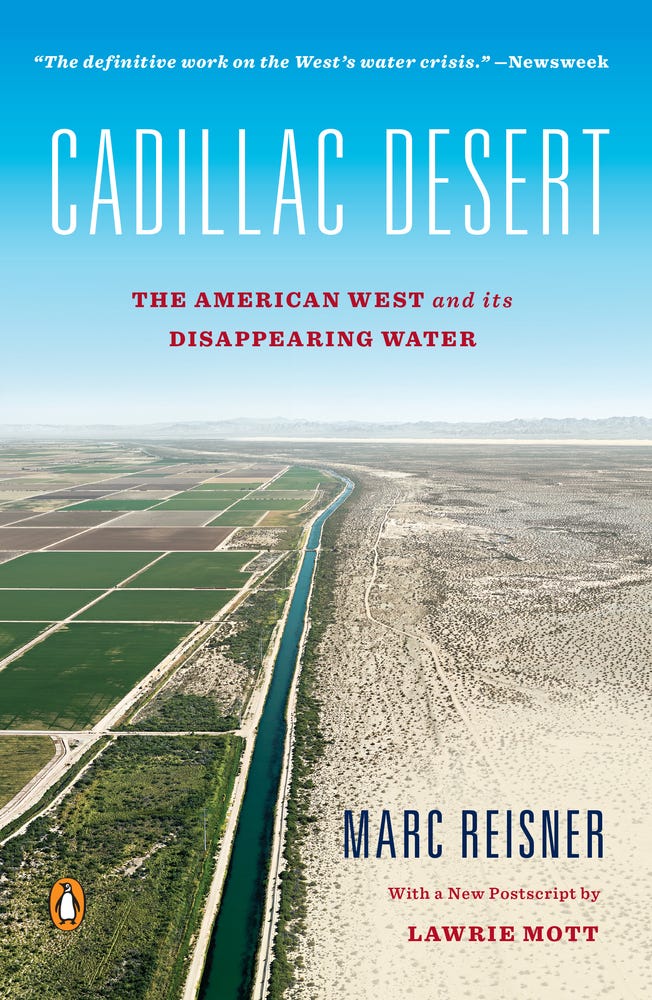
From Awareness to Action
Water has always been a scarce commodity in regions with limited rainfall, yet dams, water diversion projects, and cattle ranching have only intensified the crisis, making water politics a defining issue in the American West.
Of course it’s not just the western U.S.—those living in Australia, South Africa, the Middle East, North Africa, and parts of Southern Europe have long faced the realities of water scarcity. And with human-driven climate change, more regions that have historically enjoyed abundant rainfall are beginning to experience droughts, shifting weather patterns, and a growing awareness of just how precious water really is.
With all of this in mind—my natural inclination to do my part, my desire to conserve water, and my commitment to using what little we have efficiently—David and I made our first investment in rain catchment back in 2005.
When living at our previous house in Oakland, we bought three 300-gallon tanks that had once been used to store and ship soy lecithin. We found them on Craigslist from a guy who collected and resold them after they were emptied. (If you’re interested, you might be surprised to find similar tanks for sale near you also on Craig’s List or a similar website.)
When we moved to our current home, those tanks came with us. Because when it comes to water, every drop counts.
How to Collect the Rainwater (Getting the Water In)
When we first got the tanks, David had to figure out how to connect them to our rain gutters and drain pipes so the rainwater could flow properly from one to the next. That was laborious enough, but he figured it out—bless his heart. That setup worked beautifully at our old house. We placed the tanks right against the house, directly under the rain gutter, so water could be diverted straight from the downspout. We propped them up on wooden pallets—otherwise, it would have been impossible to connect anything to the spigots at the bottom. The space was level, everything lined up, and the system functioned exactly as it should.
Then we moved.
At our new house, there was no obvious place to put three 300-gallon tanks against the house.
On two sides, the steep hillside made it impossible without leveling the land (which we weren’t about to do).
In the front and back, they would have been massive eyesores—and there wasn’t much level ground to work with anyway.
We thought and thought, until we finally found the perfect solution.
At the very upper back of our garden, we have what’s called a ramada—an open-air structure with a roof—sitting right up against our fence. On the other side of that fence is an easement, meaning it’s an area no one uses and no one sees. Perfect. We placed the tanks on the other side of the fence, and since the ramada roof is right next to the fence—and thus the tanks—we installed a simple gutter along the back of the ramada roof, cut a small hole in the fence, and redirected the rainwater straight from the gutter into the tanks.
How to Use the Rainwater (Getting the Water Out)
The real challenge was getting the water out of the tanks so we could actually use it to water our gardens. In the beginning, I channeled my inner Laura Ingalls—opening the large spigot at the bottom, filling a bucket, carrying it to the plants, watering, and repeating. Over and over and over again. That got old real fast, so David got a pump.
This is when my husband became a hero. A superhero, because to make it work, you need to:
Connect a hose to the spigot at the bottom of the tank
Attach a pump to that hose
Connect another hose and nozzle to the pump to create water pressure
Sounds simple. And in theory, it is. But finding the right size connectors and fittings for everything to work seamlessly? That was another story. And yes, David cursed me the entire time. 🙂 But it worked. For years in our old house, we didn’t even have an irrigation system. We just used the water from our rain tanks. Then, we moved—and so did the tanks.
How to Maintain the Tanks
Setting up a rain catchment system is one thing—keeping it running smoothly is another. The biggest maintenance issues aren’t with the tanks themselves but with the pump and its attachments. (We’ve had the same tanks for 20 years!) Keeping everything—the pump, hoses, and adapters—in working order requires attention both during use and when it’s idle.
Key Maintenance Tips
Protect Your Pump – Pumps are sensitive to heat and exposure. If left in direct sun, they can wear down quickly. Ours gave out after too much exposure, so we built a simple protective box from plywood (thanks to a generous neighbor who had some scraps). Keeping your pump covered and elevated can extend its lifespan and protect it from both weather and critters.
Prevent Dry Runs – Pumps can burn out if they run without water. If your system doesn’t have an automatic shutoff, be mindful of how long it’s running. We learned this the hard way and had to replace ours (more than once).
Regularly Check Hoses and Connections – Over time, hoses crack, fittings loosen, and seals wear down. A quick check every few months can prevent leaks and pressure issues.
Off-Season Maintenance Matters – Just because you’re not using the pump in winter doesn’t mean you should ignore it. During the rainy season, when the tanks are just collecting water, run the pump occasionally to keep it in working order. A little attention in the off-season can save you major headaches when you need the system the most.
Clear Debris from Gutters and Inlets – While this won’t damage your pump, clogged gutters can block water from reaching your tanks. Regular cleaning ensures you’re maximizing your rain collection.
Rainwater collection is an incredible way to conserve water and reduce reliance on municipal sources, but like any system, it requires upkeep. A little routine maintenance goes a long way in keeping everything running efficiently—and saving you from replacing parts more often than necessary.
(Here’s a short video that shows the set-up.)
A Few Things to Note
We use the rainwater only for irrigation—not for drinking. You could filter and sanitize it to make it potable, but that’s not our setup.
Stored rainwater lasts indefinitely. We use it once the rains stop and the gardens start needing irrigation, but it’s perfectly fine sitting for months and months.
Our irrigation system stays off in winter (unless we’re in a severe drought), so we rely on the rain tank water only when needed in the dry seasons.
Keeping gutters clean is key—not because debris is harmful to plants, but because it can clog hoses and openings, making it harder to get the water out.
Does the rainwater from our tanks irrigate all of our gardens? No. Not for us, but they might for you! We have a large property, and while the tanks provide water for many sections of our back garden, they don’t cover everything. How far they go depends entirely on how much rain we got the previous winter. Some years, it’s enough. Other years, I have to supplement with city water and…grey water!
(Here’s a short video that shows our gardens — most of which are irrigated by rain water and grey water.)
I told you—I’m obsessed with water!
In an upcoming article, I’ll dive into grey water—what it is, how we use it, and why it’s a game-changer for conserving water and keeping our plants thriving. I’ll cover:
The difference between white water, grey water, and black water (because yes, there’s a difference!)
What kinds of products you need to use when irrigating with grey water to keep plants safe
Grey water from bathroom sinks vs. laundry—how and why we divert it to our garden
Why we don’t use grey water from the kitchen sink (and why it’s not the best idea)
If you’ve ever wondered how to make the most of every drop, stay tuned and subscribe — you won’t want to miss this!
More Resources for You!
👉 Because the publisher took The Vegan Table (and Color Me Vegan) out of print, I am able to repurpose all of my recipes for which I own the copyright again. Please check out my Recipe E-Books and my library of On-Demand Cooking Classes for more tried and true recipes!
👉 Work with me 1:1 – Get personalized guidance to build healthier habits, cultivate self-compassion, communicate with conviction, strengthen emotional resilience, or whatever you are looking for.
👉 Read A Year of Compassion – Daily inspiration to help you live with intention, kindness, and compassion for humankind, animalkind, and the ecosystems we all depend on.
👉 Listen to Food for Thought – Inspiration for living compassionately, sustainably, and healthfully (18 years strong!)
👉 Travel with me! I host animal-friendly, luxury, all-inclusive vegan trips around the world, specifically curated to ensure high-quality, high-touch premium experiences. Check out our upcoming trips, and let me know if you have any questions.




